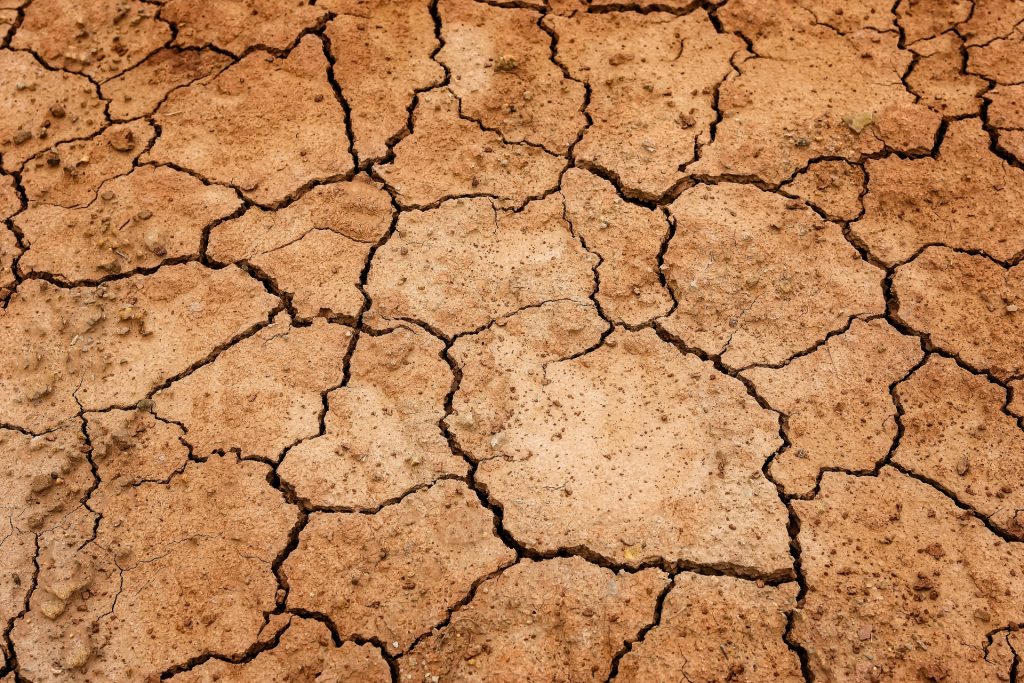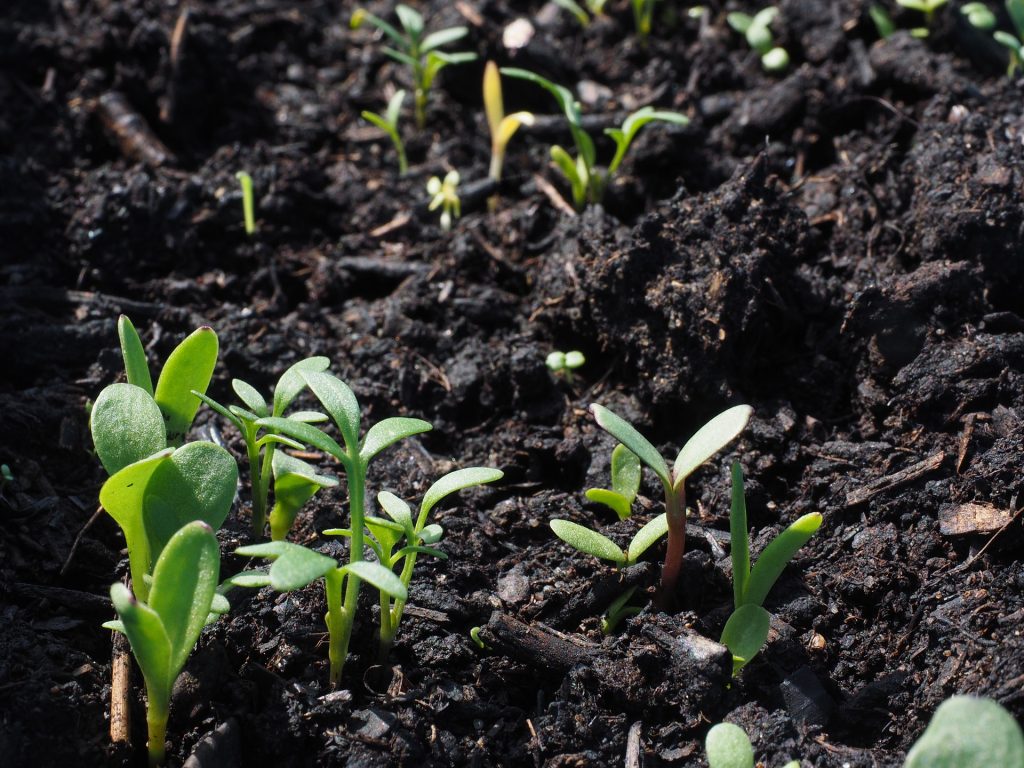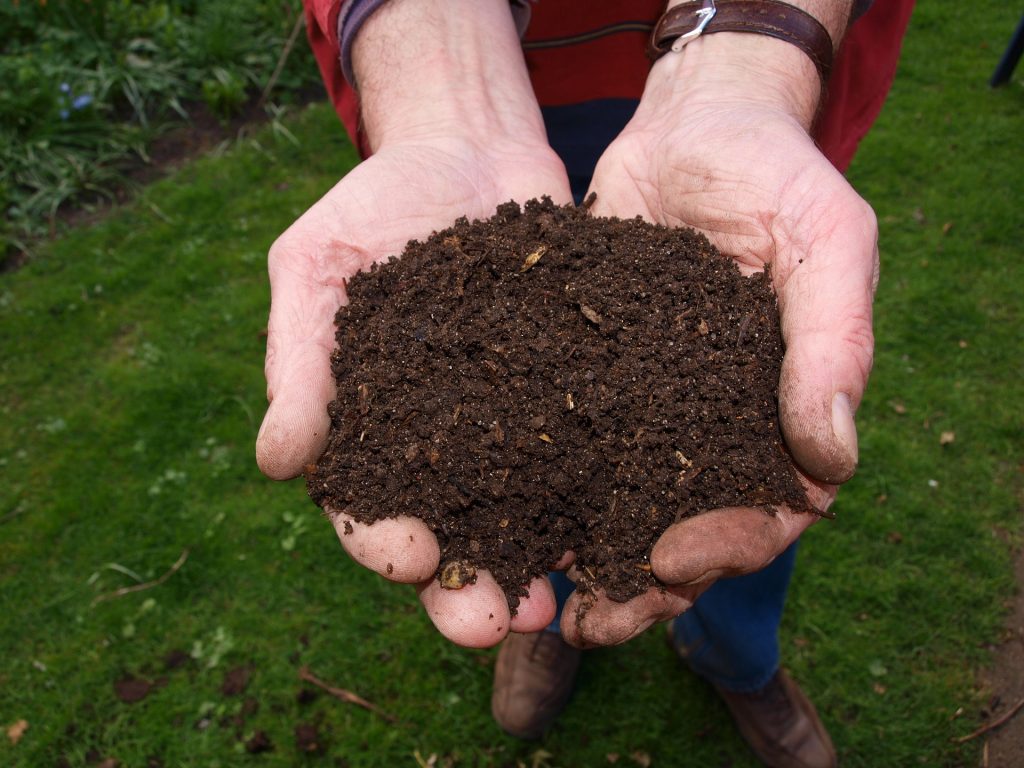When you dig into the ground, what do you call the material that you’re putting the shovel into? Some call it dirt. Others call it Soil. But what’s the difference between dirt and soil?
Dirt
Let’s start with Dirt. What comes to mind when you think of Dirt? Maybe the word dirty- meaning unclean. Or perhaps you think of a large pile of fill at a contruction site. Either way, you’ve got the right idea.
Dirt is made up of three main mineral components: Sand, Silt, and Clay. Mixed together in different ratios, all of the world’s dirt is derived from these three components.
Sand, the biggest of the three, allows good drainage, has large pore spaces (the space between the particles), and is the most resistant to erosion. Silt sits between sand and clay in terms of size and is slightly more resistant to erosion.
Clay is the smallest, the most vulnerable to erosion, and has a the ability to pack together really tightly. When compacted, clay has such small pore spaces that water cannot pass through at all. That’s why clay is commonly used in dam and pond construction to hold water in place.
So, Sand + Silt + Clay in various ratios = Dirt. It is purely a collection of minerals that vary throughout the planet based on the parent material present locally.
Dirt lacks organic material- it’s purely minerals. It’s also devoid of life- it’s dead. No wonder we use the word dirty to mean unclean- dead mineral material that sticks to our skin and clothes- gross!

Perhaps one of the best historic examples of dirt in America is the Dust Bowl- the Great Plains in the 1930s. Devoid of life and structure, the dirt was prone to massive amounts of erosion and caused a major food crisis.
So what caused some of the most fertle soil in the world to become devoid of life and turn into dirt? Tillage. Destruction of soil ecosystems. Exploitation of the Earth.
If the soil became dirt, then what’s soil made of?
(Living) Soil
Soil starts as dirt. The same lifeless mineral material that is dirt is the foundation of soil. So how does it become soil?
Hans Jenny, known as the father of soil science, defines soil is containing 3 things:
- Minerals (Sand, Silt, Clay)- aka dirt
- Organic Matter
- Organisms (Aerobic organisms, to be precise)
So, dirt + organic material + organisms = soil. How can organic material and organisms turn dead dirt in to living soil?
It’s all about LIFE.
The organisms in the soil are collectively known as the soil food web and are perhaps the most foundational elements to animals’ survival on Earth.
The soil food web mimics the trophic food webs we learn about in grade school- Insects eat plants; Birds eat insects; Those birds are eaten by bigger birds and predators like foxes and so on. As you go up the food chain, more complex relationships form, but all are dependent on the bottom of the food chain as the foundational elements.

In the soil food web, bacteria and fungi are the primary feeders. They are able to break down the minerals in the soil (sand, silt, clay) and turn them into food. From there, higher level predators (flagellates, amoeba, ciliates, and nematodes) feed on the bacteria and fungi. These higher level predators exude waste in the form of plant-available nutrients in what is known as the “poop loop”.
It’s these interactions that actually feed plants. Bateria and fungi form mutualistic relationships with plant roots that allow an exhange of nutrients. The protozoa “poop” out nutrients (much like manure-high in nitrogen) that feeds the plants at the root level.
Organic material in the soil, such as dead plant matter, plant exudates, and other wastes found in the soil, help provide sheltr and food for the organisms within the soil. The more organic material that exists in the soil, the larger potential population of beneficial organisms.
The Difference Between Dirt and Soil
Soil = Dirt (sand, silt, clay) + Organic Matter + Organisms
You can’t have soil without dirt, but you CAN have dirt that’s not soil. Basically, if there’s no life or organic matter mixed in with the sand/silt/clay, then you’re working with Dirt.
Knowing this, it should start to become clear that any DIRT can become SOIL with the addition organic matter and the right organisms.
A 2003 study by Donald Sparks shows that the median elemental compositions of dirt/soil around the world contains more than enough mineral nutrients for plants to survive. The only problem we have is plant’s ability to access those minerals.
That’s where the soil life plays such an important role. The bacteria and fungi are able to take those mineral nutrients and break them down into plant-available forms and their predators (protozoa, nematodes, etc.) further condense those nutrients into plant-available forms.

Additionally, organisms in the soil provide the added benefits of creating soil structure by creating aggregates in the soil, holding nutrients in plant available form, and retaining water for longer within the soil.
Let’s compare that to dirt, which has no organisms to help. Dirt has no structure, causing nutrients to leech out. As water flows through dirt, there is no structure or organic matter to help hold the water, and it flows right through, likely taking the easily movable silt and clay particles with it, causing erosion. No benefits, lots of problems.
How to turn Dirt into Soil
At this point, you can probably guess the answer based on the simple equation above. Think about the difference between dirt and soil. Here it is again as a refresher:
Soil = Dirt (sand, silt, clay) + Organic Matter + Organisms
At this point I do want to specify that I am talking about aerobic organisms, or organisms that need oxygen to survive. These are the beneficial soil organisms you want in your soil.
These are the same organisms that are present in any high quality compost. Compost also includes high levels of organic matter.
So, Dirt + Compost + time -> Soil

It’s not quite that simple, but that’s the gist of it, and it’s definitely all you need to get started. Adding high quality compost will innoculate your dirt (or poor soil) with beneficial microorganisms AND and organic matter. Simply placing the compost on top of the dirt/soil will suffice, but you may want to mix it in slightly if you’re truly working with dirt.
After adding compost, consider protecting and feeding the soil by adding a deep mulch layer like you’d find on a forest floor. There are huge varieties of mulch materials but the best is what’s available locally and (ideally) free. Try to avoid anything with seeds to avoid bringing in any unwanted plant species.
Learn More about the Soil Food Web
If this sort of thing interests you and you want to dive deeper into the science, check out Dr. Elaine Ingham’s work on the soil food web.
Dr. Ingham recently released a new set of courses called the Soil Food Web Foundation Course that can take you from the level of understanding from reading this article to a soil consultant level in just 6 weeks of dedidated study. You have a full year to access the course, so there’s no rush to get it done in that amount of time.
I took this course and can honestly say it improved my understanding of the soil 400% and gave me the knowledge and confidence to make high quality compost & compost liquid ammendments. The course also introduces microscopy and teaches you how to identify and quantify the organisms in your soil or compost to make sure you have the complete soil food web.
Full Disclosure- the link above is an affilitate link, and if you end up signing up for the course I’ll get small kickback for referring you, which helps support running this site and producing content for you.
Wrapping up
Thanks for reading this post on the difference between dirt and soil. If you have any questions or comments, please leave them below or head over to the contact page.
Best of luck in your Dirt -> Soil journey!
